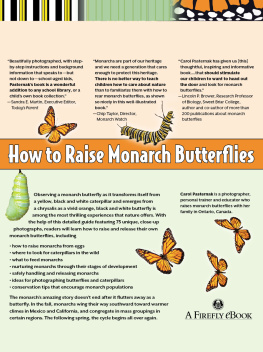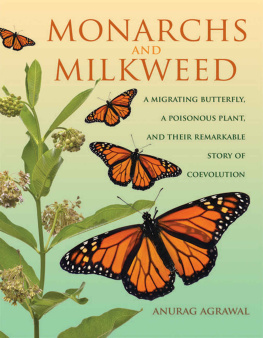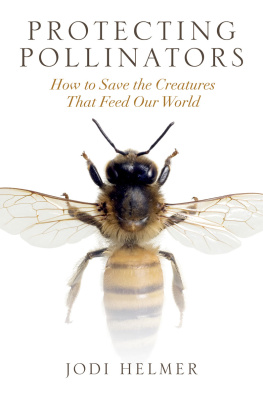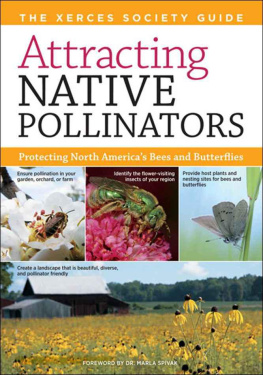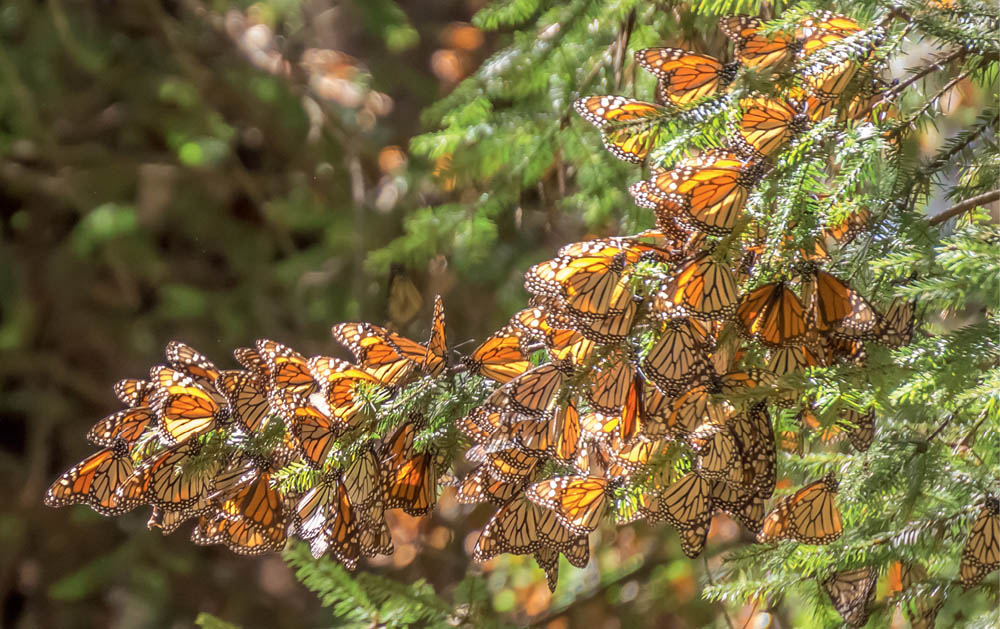The mission of Storey Publishing is to serve our customers by publishing practical information that encourages personal independence in harmony with the environment.
Edited by Deborah Burns
Art direction and book design by Michaela Jebb
Text production by Erin Dawson
Cover photography by Front: herreid/iStock.com, top; Row 1 l. to r. Dembinsky Photo Associates/Alamy Stock Photo, watcher fox/Shutterstock.com, B. Christopher/Alamy Stock Photo, Andrew Greaves/Alamy Stock Photo, Botanic World/Alamy Stock Photo, Florapix/Alamy Stock Photo, vodolej/stock.adobe.com, John Sullivan/Alamy Stock Photo, Krystyna Szulecka/Alamy Stock Photo, ANGHI/iStock.com; Row 2 l. to r. NNehring/iStock.com, Zoonar GmbH/Alamy Stock Photo, ArtofNatureandLight/stock.adobe.com, Skip Moody/Dembinsky Photo Associates/Alamy/Alamy Stock Photo, Ivan Smuk/Shutterstock.com, timmy/iStock.com, Kyle Selcer/Alamy Stock Photo, Nadezhda_Nesterova/iStock.com, Tamara Harding/stock.adobe.com, Christopher Price/Alamy Stock Photo; Row 3 l. to r. dutchlight/stock.adobe.com, mashimara/iStock.com, helga_sm/stock.adobe.com, Belikart/iStock.com, Keir Morse, sbonk/iStock.com, WILDLIFE GmbH/Alamy Stock Photo, Khatawut Chaemchamras/Alamy Stock Photo, Panther Media GmbH/Alamy Stock Photo, ekim/stock.adobe.com; Row 4 l. to r. Shawn Fair/iStock.com, ivanastar/iStock.com, QwazzMe Photo/iStock.com, Rafail/stock.adobe.com, Kevin Schafer/Alamy Stock Photo, Bill Brooks/Alamy Stock Photo, linjerry/stock.adobe.com, Hanna Tor/Alamy Stock Photo, Steffen Hauser/botanikfoto/Alamy Stock Photo, ariadna126/stock.adobe.com; Row 5 l. to r. desertsolitaire/iStock.com, NNehring/iStock.com, TYNZA/iStock.com, James Mundy, Natures Ark Photography/Alamy Stock Photo, Andyworks/iStock.com, Kevin Knight/Alamy Stock Photo, Zigmunds Kluss/stock.adobe.com, agenturfotografin/stock.adobe.com, NNehring/iStock.com, na9179126124/stock.adobe.com; Back: Lauren Hedien/Getty Images, left; helga_sm/stock.adobe.com, right; Spine: Martin Ruegner/Getty Images
Interior photography credits appear .
Illustrations by A. James Gustafson
Maps by Ilona Sherratt Storey Publishing, based on information supplied by The Xerces Society
Text 2021 by The Xerces Society, Inc.
Ebook production by Kristy L. MacWilliams
Ebook version 1.0
April 13, 2021
All rights reserved. No part of this book may be reproduced without written permission from the publisher, except by a reviewer who may quote brief passages or reproduce illustrations in a review with appropriate credits; nor may any part of this book be reproduced, stored in a retrieval system, or transmitted in any form or by any means electronic, mechanical, photocopying, recording, or other without written permission from the publisher.
The information in this book is true and complete to the best of our knowledge. All recommendations are made without guarantee on the part of the author or Storey Publishing. The author and publisher disclaim any liability in connection with the use of this information.
Storey books are available at special discounts when purchased in bulk for premiums and sales promotions as well as for fund-raising or educational use. Special editions or book excerpts can also be created to specification. For details, please call 800-827-8673, or send an email to .
Storey Publishing
210 MASS MoCA Way
North Adams, MA 01247
www.storey.com
Library of Congress Cataloging-in-Publication Data on file
Contents
Preface
Growing up in Nebraska, I was fortunate to live in an area where monarchs showed up every spring and came back through on their way south every fall. They were among the biggest and most noticeable butterflies. As a kid, I loved to watch them flutter through, looking for milkweed or mates, or on their long migration to overwintering sites in Mexico. In a single day we sometimes saw thousands of monarchs fly past on their journey south.
If you grew up almost anywhere in the continental United States or southern Canada, you are probably familiar with these fascinating animals. Graceful and beautiful, monarchs stand out due to their large size and vivid orange-and-black coloring. They are often the only butterfly people can identify.
This book is designed to help you help the monarch butterfly. Look through the pages and see which milkweed host plants and which nectar plants are native in your area. Then pick the ones that will fit best in your space, plant and water themand you will have created a habitat for monarchs.
Of course, do not use pesticides, especially insecticides, as these kill monarchs and other beneficial insects. And make sure you tell your neighbors what you are doing and whywe need as many people as possible to take action. We are always heartened to hear the stories of entire neighborhoods getting involved; this truly gives us hope.
There is one last very important step. Sit in a comfortable chair with a favorite drink, enjoy your flower-filled landscape, and watch the monarchs and other butterflies add color to your life. You can feel excited to be part of the solution, saving the monarchs so they will be with us for years to come.
Scott Hoffman Black, Executive Director, The Xerces Society
Part I
North American Royalty
One of the remarkable things about the monarch butterfly (Danaus plexippus) is that although it is a single species, it largely exists as two separate populations: one east of the Rocky Mountains, and one to the west. Individuals may periodically cross this Great Divide, but the majority of monarchs belong to distinct but equally epic dynasties, generations of mass-migrating relatives.
Smaller scattered populations of this species also exist elsewhere, yet the majority of monarchs on Earth occur within these two famous migrating populations. Both have compelling stories of persistence and resilience, and both face increasing challenges.
Ranging from the Great Plains and southern prairie provinces to the Atlantic coast, Eastern monarchs are renowned for migrating incredibly long distances to their overwintering sites in the oyamel fir (sacred fir) forests in the mountains west of Mexico City. In fact, during the fall migration, many monarchs fly more than 3,000 miles (some fly up to 4,000 miles!) to arrive among millions of others, seeking shelter in the mountain forest canopy from harsh weather.
The oyamel forest sites provide the perfect microclimate for monarchs: not so cold that the butterflies freeze and not so warm that they become active and burn too many calories, expending energy they will need for the trip north. This precise climate is vital, because the same monarch that migrated south will return as far north as Texas in the spring, seeking places to lay eggs.
Astonishingly, the animal making this journey weighs less than a penny. Imagine attempting this arduous trip, buffeted by thunderstorms, navigating vast stretches where the landscapes may be monocultures of corn or soybean or green lawn or concrete, looking for flowers to fuel your flight across the continent. It is truly an amazing feat.
Western monarchs make a slightly shorter but equally remarkable journeyone that traverses some of the most challenging landscapes in North America, including deserts, mountain ranges, and enormous agricultural lands virtually devoid of habitat.




